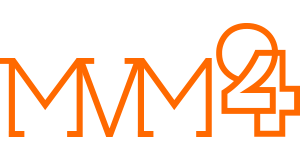4th International Virtual Congress of Visual and Multimodal Methods 2024
14 and 15 november 2024
Universidad Anáhuac México (virtual)
Deadline for abstract submission: 23 june, 2024
Organizers:
Visual Modi: International Association for Research in Visual and Multimodal Methods and Universidad Anáhuac México
With the support of partner structures*
During the previous bi-annual meetings in 2018, 2021 and 2023, the first three international conferences on visual methods in the social sciences were held, focusing on the themes of communication, data, methods, results and dissemination. Fifteen international research groups and scientific partners from five countries and three different continents participated in the last and third congress.
The debates generated around the first meetings on visual methods revealed the need to continue to draw inspiration from other scientific disciplines and contemporary research areas, as well as to publicize the most innovative research approaches. The conferences are open to interdisciplinarity and invite the presentation of studies that provide knowledge on the visual.
In this 4th International Virtual Congress of Visual and Multimodal Methods 2024, two areas of work are proposed:
Axis 1: title
· The first axis is an extension of the 2023 conference to allow geographically distant researchers to be able to present their research work remotely
Resume the 2023 categories Axis 2: Multimodal research
· The second proposed axis concerns the different perspectives of multimodal research, which includes not only the development of data management or analysis methodologies in a multidisciplinary perspective, but which also works around the creation of visual or audiovisual, even interactive and sensory.
In their work Film Sociology. Theories and practices, Joyce Sebag and Jean-Pierre Durand insist on the contribution of cinema to shed new light on reality, as an instrument of knowledge and the transmission of this knowledge (2020). “The image is not an element constructed subsequently by thought, it is primary temporally – in perception – and constitutive of the act of thinking” (Sebag and Durand, 2020, p.111). In this sense, images are not simple illustrations but they help produce knowledge and report on research. Visual methods thus have a dual function, both restitution and creation of a corpus of data. ¿ What are the epistemological issues of multimodal creation? ¿ How do visual and audiovisual media redefine the way science is done? The challenge of this axis is to take a critical look at the making of multimodal research.
Multimodality has gradually established itself in the network conferences both in the present research work (virtual reality; augmented reality; etc.) and in the theoretical reflection using authors such as Norris (2004). Two of the founders of the network also offered a multilingual file on interactive methods with a historical introduction to new writings (Ibanez Bueno, Marin: 2021) with an interview with researcher Sarah Pink (2021) who analyzes the evolution innovative methods in the human and social sciences. This is why the international network of researchers named the Visual Modi association at the end of 2022 as the International Association for Research in Visual and Multimodal Methods to take into account this enrichment which does not limit the work, for example, only to linear narrations of the research video type using the codes of cinema.
During this congress, we expect presentations or oral communications (lasting approximately 15 minutes), as well as audiovisual and multimodal projections (adapting them to the exclusively remote nature of the conference). Projects must be synthesized and communicated clearly in the synchronous virtual conference format.
Topics that may be covered include:
2.1 Methodological design and processes
2.2 Technological innovation in visual methodologies
2.3 Participatory and expository visual methods
2.4 Media studies
2.5 Epistemology and studies on visuality
2.6 Urban space, territory and mobile methods
And any other research based on visual anthropology, multimodal methods and visual methods.
Bibliographic references:
Hémont, F., & Patrascu, M. (2016). Panorama de méthodologies audiovisuelles en SHS. evue française des sciences de l’information et de la communication, Société Française des Sciences de l’Information et de la Communication.
Ibanez-Bueno, J., & Marín, A. (2021). From visual methods to futures anthropologies. An interview with Sarah Pink. Revue française des méthodes visuelles. https://rfmv.fr
Ibanez-Bueno, J., & Marín, A. (2021). Images interactives et nouvelles écritures Un mouvement émergent pour de nouvelles écritures interactives. Revue française des méthodes visuelles. https://shorturl.at/yIKL4
Leon-Quijano, C. (2022). Why do “good” pictures matter in anthropology. Cultural Anthropology, 572-598.
MacDougal, D. (2004). L’anthropologie visuelle et les chemins du savoir. Journal des anthropologues , 233-279. (https://journals.openedition.org/jda/1751)
Norris, S. (2004). Analyzing multimodal interaction: A methodological framework. Routledge.
Pink, S. (2009). Doing sensory ethnography. London: SAGE.
Pink, S. (2011). Multimodality, multisensoriality and ethnographic knowing: social semiotics and the phenomenology of perception. Qualitative Research, 261-276.
Sebag, J., & Durand, J.-P. (2020). La sociologie filmique. Théories et pratiques. CNRS Editions.
Yvart, W., Delestage, C.-A., & Lamboux-Durand, A. (2023). Les contours des méthodes visuelles. Visual Methods International conference. La Laguna, Espagne.
Submission date
o Title of the proposal
o Names, first names, institution, email (up to three authors per submission)
o A maximum of 6 keywords separated by ";"
o Summary of 3000 to 5000 characters (spaces included) and references
IN CASE OF ACCEPTATION
The full text (20000 30000 characters / included spaces)
IMPORTANT DATES 2024
CALL FOR PAPERS – SUMMARY From February 15 to June 23
PEER REVIEW From June 24 to July 9
PRESENTATION OF RESULTS From July 10 to July 17
PRESENTATION OF COMPLETE WORKS Deadline September 23
4th INTERNATIONAL VIRTUAL CONGRESS
OF VISUAL AND MULTIMODAL METHODS 2024 November 14 and 15
Mexico 8:00a.m. to 2:00 p.m.
Spain/France 3:00 p.m. to 9:00 p.m.


